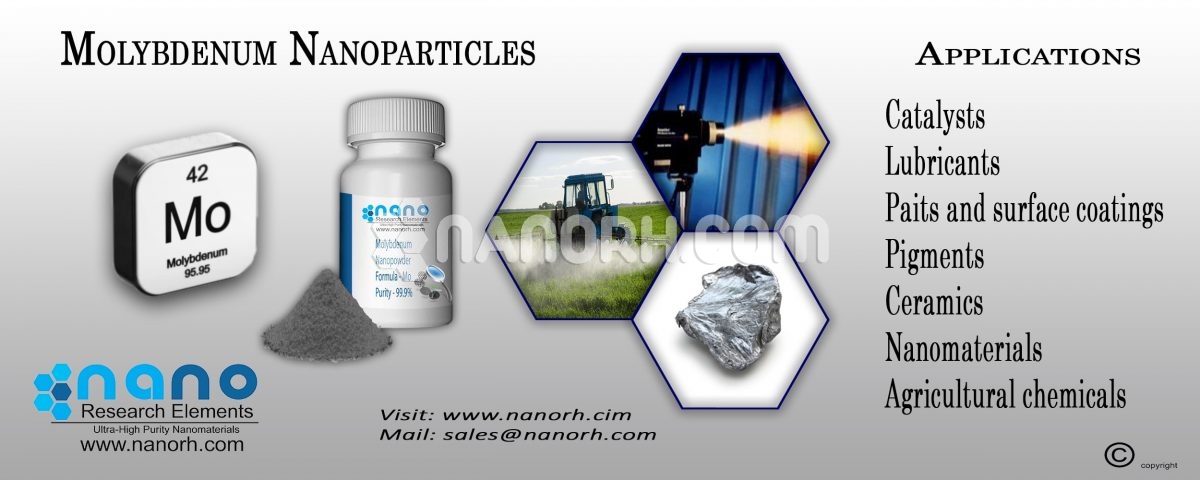Molybdenum Nanoparticles
MOLYBDENUM NANOPARTICLES
INTRODUCTION
The molybdenum nanoparticles are molybdenum metal particles and have dimensions of 10-100 nm (approximately). Molybdenum nanoparticles are an important specialist in alloy, as it helps to strengthen the capacity and strength of extinguished and hardened steels. It also improves the quality of steel at high temperatures. Molybdenum nanoparticles are used in combinations, terminals and impulses. Molybdenum nanoparticles powders are used in the inks of circuit boards for circuit sheets and in microwave oven devices and in heat sinks for solid state devices. Most molybdenum nanoparticles mixtures have a low dissolving capacity in water, but when molybdenum-containing minerals come into contact with oxygen and water, the posterior MoO2-4 molybdate particle is very solvent. In a modern way, molybdenum mixtures are used in high weight and high temperature applications, such as shadows and impulses.
Molybdenum is harmful in abundant quantities. Occurs in different conditions of mineral oxidation. It has a low solvency in water and can be used very well for high temperature and weight applications. The molybdenum nanoparticles are combustible and then must be carefully reserved. The anticorrosive ability of hardened steel under destructive conditions can be improved by adding 1 to 4% molybdenum nanoparticle powders to the treated steel.
Molybdenum Nanoparticles, nanoduct or nanopowder are particles of dark surface regions. Molybdenum nanpoparticles in the nanoscale are commonly 50 to 100 nanometers (nm) with explicit surface area (SSA) in the range of 1 to 5 m2 / g. The molybdenum nanoparticles are also accessible in high immaculation and high virtue and in covered and scattered structures. They are also accessible as dispersion through the collection of nanofluid AE generation.
Nanofluids are commonly characterized as nanoparticles suspended according to or using surfactant or surface charge innovation. Specialized management for the dissemination of nanofluids and the determination of coverage is also accessible. The nanoparticles functionalized on the surface take into consideration the particles that must be adsorbed, especially at the interface of the surface using artificially bound polymers.
MOLYBDENUM NANOPARTICLES APPLICATIONS
Molybdenum nanoparticles have applications in metal processing. Substances added to 1-4% of Molybdenum nanoparticles can make hardened steel improve its anticorrosive ability in destructive situations. In the electronics sector, it is mainly used in the production of high-control vacuum valves, hotter cylinders, X-ray tubes and more.
Furthermore, it is used in the processing of wood, catalysts, coatings, cutting tools, hard composite materials, high-temperature oil, microelectronic films, etc.
The different applications of molybdenum nanoparticles are the following:
• In electrochemical capacitors.
• In coatings, nanowires, nanofibres, plastics and materials.
• In explicit applications of compounds and impetus.
• As pulses, oxidation pulses, breaking impulses, impulses and colors of hydrogenation.
• In the production of dishes and glasses.
• As a raw material for generating molybdenum metal.
• Molybdenum oxide nanoparticles have application in frames of photographic reagents, such as automobile gas sensors and anodes in lithium particle batteries.

